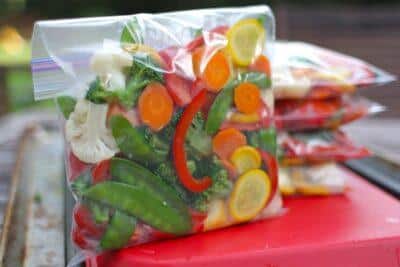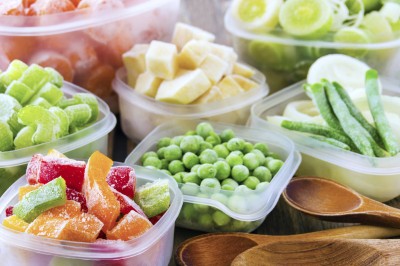As a gardener, chances are you’re always looking for ways to preserve the season’s harvest so that you can enjoy it throughout the winter months. Even if you don’t garden, you can still benefit from various preservation methods by purchasing bulk food at peak harvest times from your local farmers’ market.
While it’s certainly beneficial to learn a variety of preservation methods, there are some methods such as canning, pickling or dehydrating that take time and a bit of practice to truly master. Freezing vegetables, however, is one of the easiest and it’s a great way to preserve your fruits and veggies while maintaining most of their nutrients and flavor.
Freezing can be as simple as washing your produce and throwing it into the freezer, but this will not give you the best results. Keep the following tips in mind and next time you need homegrown fruits and vegetables for a stir fry, casserole or soup, it will be as easy as going to your freezer.
The Best Source For Non-GMO Heirloom Seeds Is Right Here!
I also find that freezing herbs is a great way to have their fresh flavors around all winter.
What Fruits and Vegetables Can Be Frozen?
Many fruits and vegetables will store well in the freezer. In fact, if it is suitable for canning, it can likely be frozen. We are all familiar with the types of foods we can find in the frozen food section of our local grocery store. If you can find it there, you can freeze it yourself from fresh.
Tomatoes, beans, asparagus, peppers and berries all freeze well. Things that don’t freeze well are foods that have a very high water content such as cucumber or lettuce. If you freeze these, they will become a wilted mess once they thaw. The exception to this rule is foods that are destined for the blender or soup pot. Forget about eating a slice of raw watermelon after it’s been in the freezer – but if you’re planning on using it in a smoothie, then go for it. The same goes for lettuce for use in soups, casseroles or even stir fry.
Another thing to keep in mind when freezing fruits and vegetables is to only freeze the best. If something tastes good before you freeze it, it will taste good after. If it doesn’t taste good before you freeze it, then freezing it won’t make it taste any better.
What prep work is necessary for freezing? Consider:
- Wash – If you’ve purchased your produce from the grocery store, then it is important that you wash it before freezing to remove any pesticides or other contaminants. Even items grown in your chemical-free garden should be washed to remove dirt, bugs and so forth.
- Chop and peel – While some foods can be frozen whole, I tend to think of how convenient they will be for me to use on the day that I decide to pull them out of the freezer. For example, I will chop pepper and onions in to stir-fry size pieces before I freeze them. If you are freezing corn, you should take it off the cob for convenience later on and space-saving now. While bananas can certainly be frozen with the peel on, I like to peel them first and put them into freezer bags so that they can go straight into a smoothie.
- To blanch or not to blanch? – Many vegetables freeze better after they have gone through a process called blanching. Blanching consists of two steps. First boil or steam the vegetables without completely cooking them, then immediately plunge them into ice cold water to stop them from cooking further. The reason for blanching is that it helps to stop enzyme activity which will decay vegetables even in the freezer. Blanching helps preserve the original colors, textures and flavors.
Vegetables that should be blanched include leafy greens like spinach and kale, broccoli and asparagus.
Some recommend that even onions, bell peppers, tomatoes and corn should be blanched, but my experience has been that these all freeze well without blanching.
Discover The World’s Healthiest Storable Survival Food!
Finally, there are some foods – particularly fruits such as berries and peaches – you should “pre-freeze” flat on a tray before packing them up. This is because if you simply put them in a container to freeze, the juices will freeze and cause them to stick together, making it difficult to separate them when it is time to use them.
Packaging Food for Freezing
You may store frozen food either in freezer bags or those popular disposable containers. If you’re looking for a plastic-free solution, try either glass or stainless steel containers with either all stainless steel lids or with silicone lids or gaskets. This will ensure an airtight seal and help to prevent freezer burn.
Also, be sure to label your food and include dates. Remember, even if they have been blanched, frozen fruits and vegetables can still continue to lose some of their nutrients over time. Depending on the type of produce, most fruits and vegetables should be consumed within three months to one year for maximum nutritional value.
Freezing food is an easy way to preserve your harvest. By following these tips, your homegrown fruits and vegetables can taste great out of the freezer for many months.
Are there vegetables you freeze that most people don’t freeze? Share them in the section below:
Do You Know The Trick To Keep Food Cool When The Power’s Out? Read More Here.
 Off The Grid News Better Ideas For Off The Grid Living
Off The Grid News Better Ideas For Off The Grid Living






